Exploring the relationship between water and urban life, ‘Blue Urbanism’ focuses on the ways architecture can facilitate how we perceive and value our ties to the sea. Taking case studies from across the world, this series will take a critical look at the ways contemporary cities are evolving alongside the environment.
Coastal cities will fundamentally change in the coming years. Facing threats from rising seas and natural disasters, communities and designers cannot ignore the relationships between climate change and urban life. Building off our recent article on Murmansk, Russia, this installment in the Blue Urbanism series takes a look at Red Hook, Brooklyn. Grounded on critical work done by BASF and community partners through the Creator Space Summit in New York City, we’ve taken an in-depth look at how organizations and people are coming together to reimagine a more resilient future.

© Aerial Archives / Alamy Stock Photo
Aerial view of Red Hook, Brooklyn; credit: Justin Lane
In 2015, BASF — the world’s largest chemical producer — chose to celebrate the 150th year of its existence through a co-creation program called Creator Space. Aiming to address challenges of urban living, energy and food, the project included a tour across six cities worldwide: Mumbai, Shanghai, New York City, São Paulo, Barcelona and Ludwigshafen. Bringing together local governments, artists, residents, scientists and industry experts, each Creator Space event culminated in a White Paper that addressed a specific question. In New York, the Creator Space Summit asked: “How can we revitalize Red Hook’s built environment to invite people to work, play and experience better urban living?”
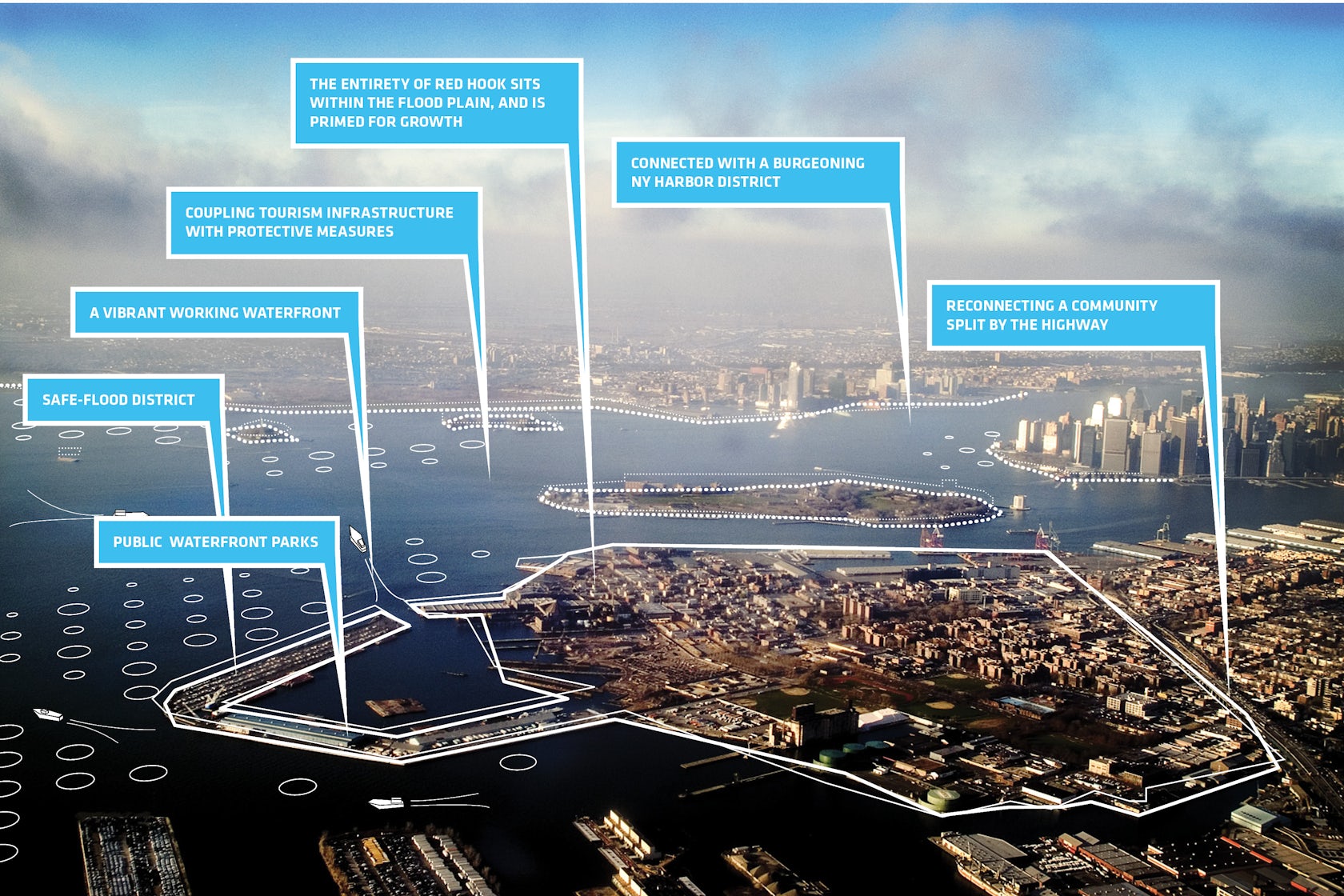
Rebuild by Design: Red Hook
Using the Red Hook area of Brooklyn, New York, as a model for other communities, the resulting summit and design competition were captured through a White Paper that outlines potential strategies for revitalizing Red Hook. Focusing on themes of habitat, citizenship and resilience, the process aimed to support other coastal communities through the research and findings. Interviewing project members from BASF, Terreform ONE and the Stevens Institute of Technology, we discovered different ways partners can foster collaboration between diverse stakeholders and inspire change.
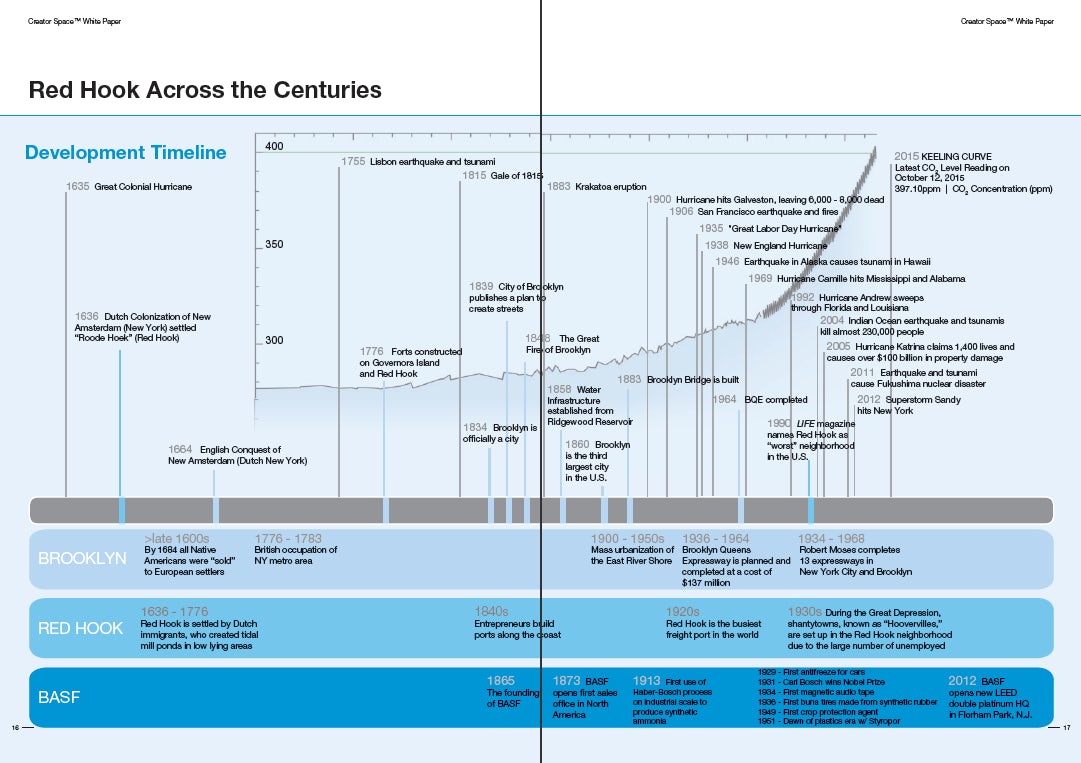
Red Hook Timeline graphic; credit: BASF White Paper
From an organizational standpoint, cities can begin by building collective knowledge on coastal communities and solutions to common problems. BASF acted as a facilitator in this capacity, in hopes that other groups and organizations can empower individuals to advocate better design. Amy Patel, an architect and account manager at BASF’s Center for Building Excellence, echoed these thoughts. “Policy and local community involvement are often some of the biggest challenges to implementing better urban design strategies. BASF had delegates and members reach out to locals from Red Hook and advocate their involvement throughout the Creator Space project.”
By drawing together industry experts, educators and citizens, coastal cities can capture a more holistic vision of the problems and opportunities presented by coastal design. Patel outlined how this inclusive and comprehensive process helped engender solutions to rejuvenating Red Hook’s built environment. These solutions could provide a framework for coastal city knowledge sharing.
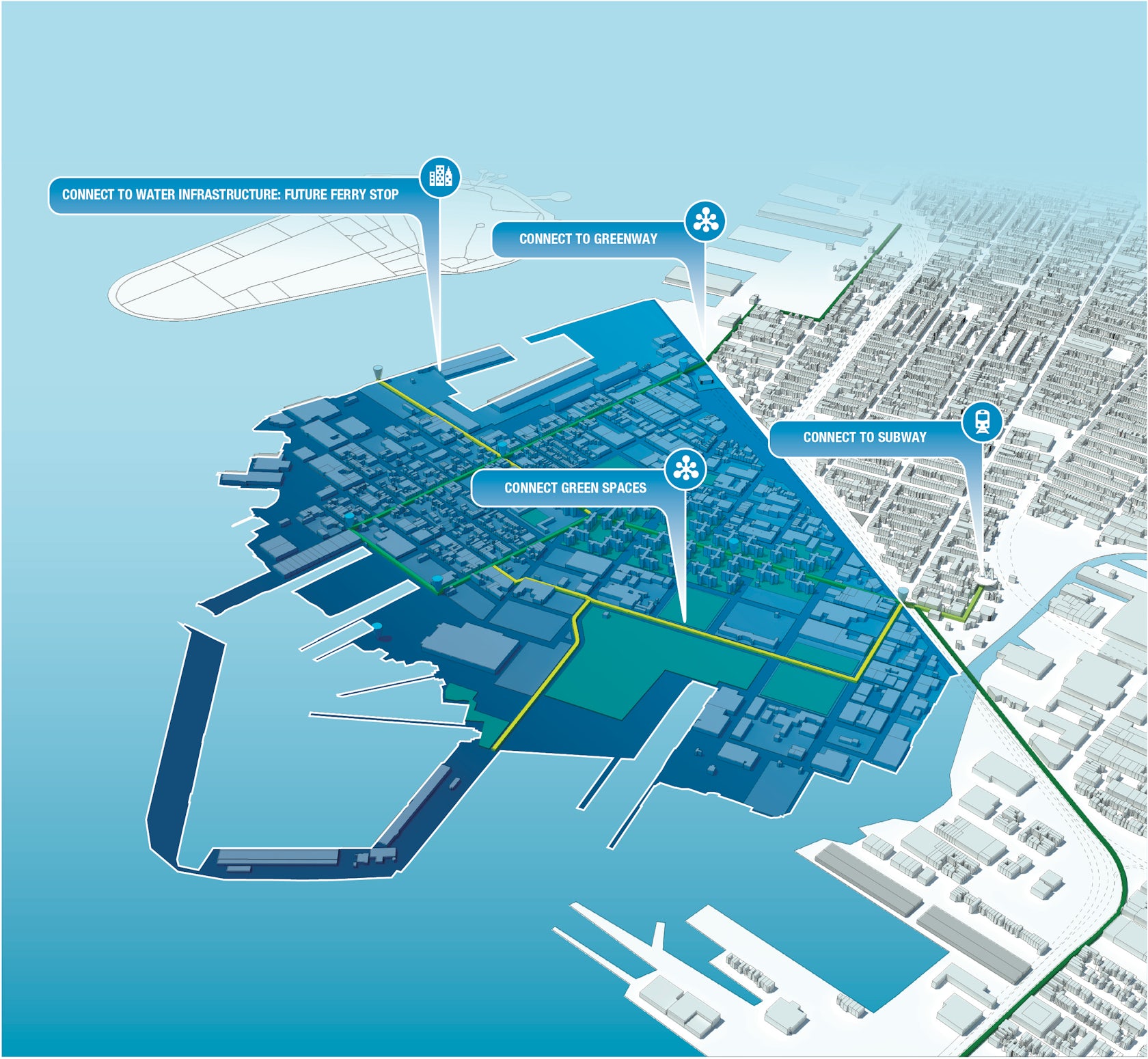
Solutions graphics; credit: Terreform ONE
Each of the solutions has the potential to address global issues. A network of green corridors and a coastal park were suggested to help manage runoff from rainstorms and protect from storm surges as well as enable new ecological growth among rising sea levels. From a policy and revitalization standpoint, the project aimed for solutions that could rethink Red Hook’s public housing while simultaneously creating a center for job training and human services.
Finally, participants imagined a model block that could inspire flood-resistant development while also contributing to a more vibrant street life. Each solution was thoughtfully and critically conceived to respond to Red Hook’s needs while remaining applicable to other coastal communities.
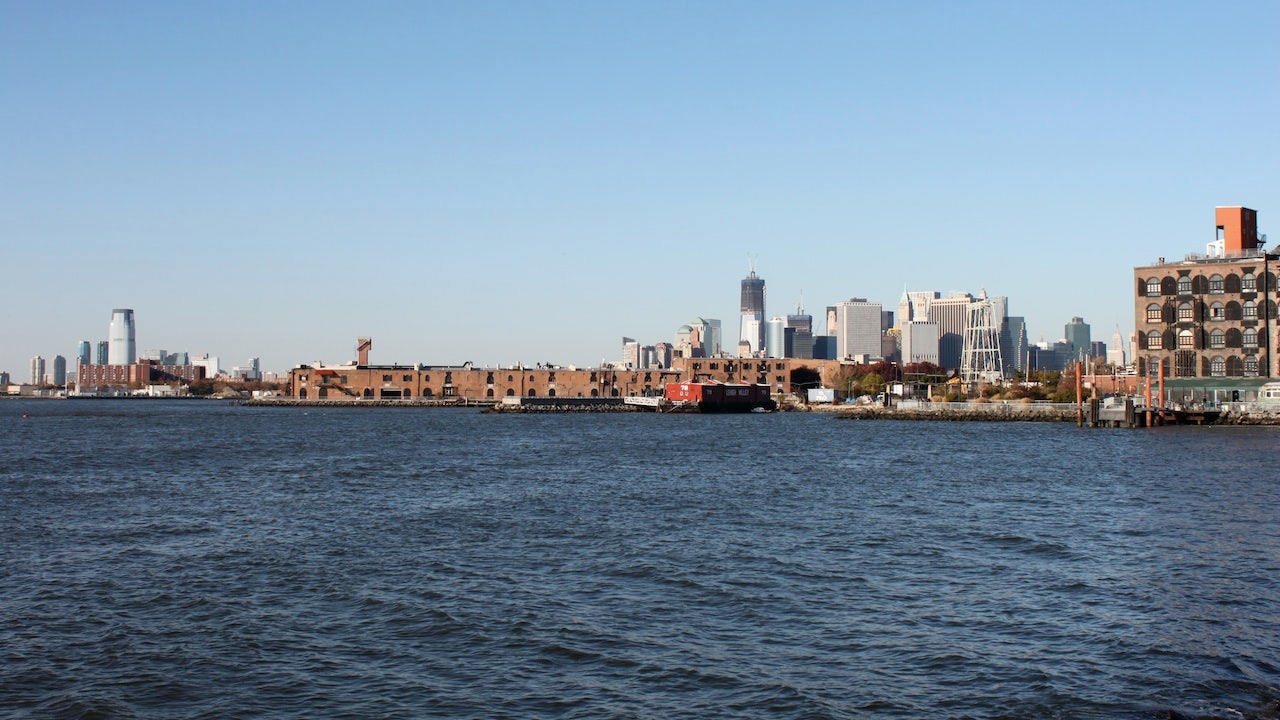
Brooklyn Waterfront
Terreform ONE, a nonprofit organization for philanthropic architecture and ecological design, became involved with helping reimagine Red Hook and its resilience solutions. Vivian Kuan, Executive Director at Terreform, worked together with BASF to download, document and translate the results into the White Paper. Kuan argued that cities need the social infrastructure and activist culture to help implement strategies and hoped that individuals felt empowered to join the dialogue.
She stated that the Creator Space process “empowered individuals to take pride in a sense of active citizenship, which entails accepting the responsibility along with the rights and benefits of a larger community.” By bringing together diverse groups like Terreform with local residents, strategies and solutions for resilience were backed by collective understanding.

© Mitch Waxman
Red Hook Waterfront
One of the most inspiring aspects of the Creator Space project was how it valued civic virtues and involvement. Real issues from Red Hook came into focus through local voices. Centering around citizens with mutual investment in the well-being of their cities, the project explored how to achieve tangible solutions to economic, environmental and societal challenges.
Alex Washburn, Founding Director at the Center for Coastal Resilience and Urban Xcellence (CRUX) at the Stevens Institute of Technology, highlighted the importance of this focus: “We need to innovate and find ways to build resilient locally. We have to make room for everyone and align politics, finance and design to make something happen in a city.” Red Hook business owners, residents, artists and activists came together to innovate and help build this alignment.
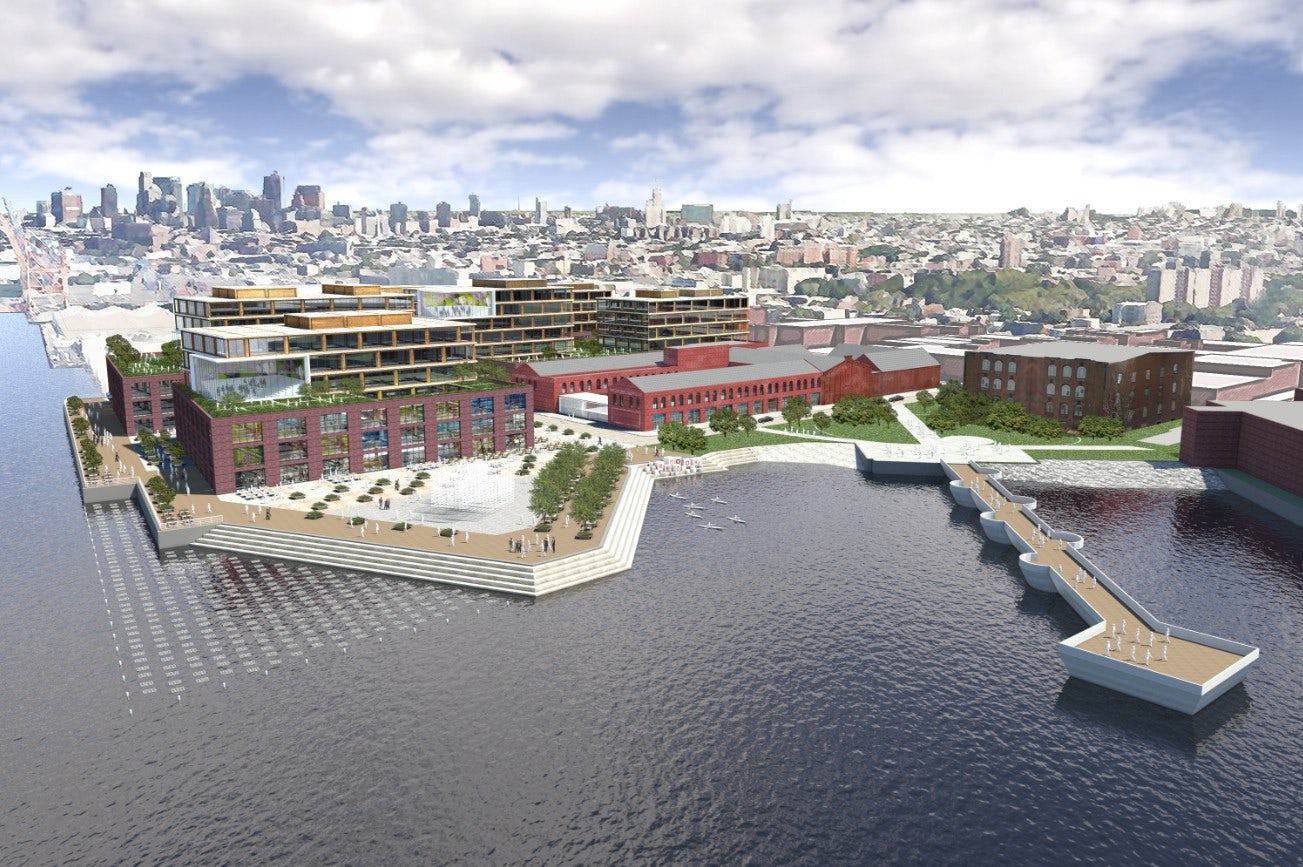
Red Hook Development by NBBJ
Ultimately, change is coming to Red Hook. Whether through disaster or design, this coastal community is one of many that must embrace the evolving nature of its urban landscapes. The Creator Space project has created a living laboratory in Red Hook, a place that can quickly become a model to other cities worldwide. Advocating knowledge sharing, inclusive solutions and an empowered citizenry, the process and White Paper lay the foundation for building a better future for coastal cities.
You can check out more about BASF’s Creator Space project, Red Hook and the solutions through the White Paper online. The discussion on Red Hook and urban coastal resilience will continue through The Center for Architecture as part of Archtober later this fall. Also be sure to check out our roundup of 10 proposals for resilient urban coasts.









